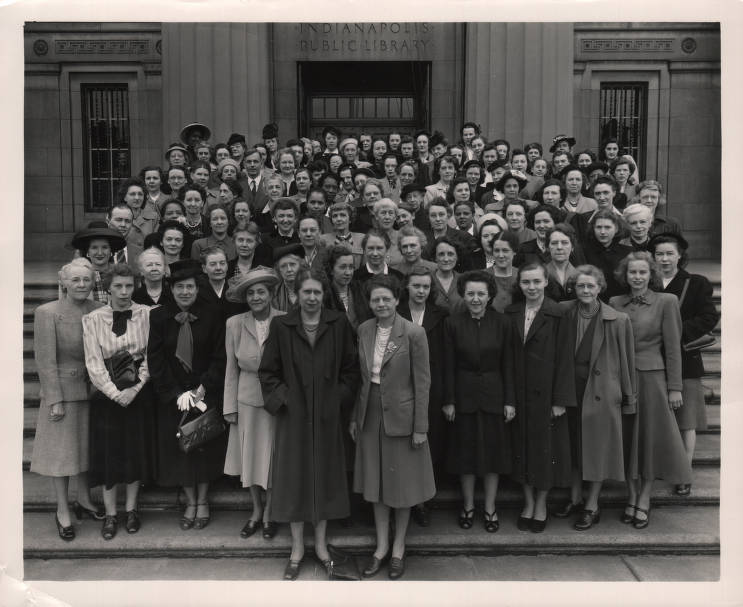
Photo info …
Credit: Crispus Attucks Museum via Indiana State LibraryView Source
(Feb. 24, 1889–Apr. 23, 1958). Born in Louisville, Kentucky, to George and Elizabeth Wintersmith Haydon, Lillian Childress Hall became Indiana’s first African American to receive an education in library science.
In 1905, Hall attended Fisk University, a historically Black university, where she studied to become a teacher in its Normal School Division and took voice lessons. There she met Nashville, Tennessee, native William Hobbs Childress, who graduated from Fisk with a BA in chemistry. In 1910, they were married. When William took a job as an assistant chemist for the U.S. Food and Drug Administration’s Pure Food Laboratory that same year, they moved to Washington, D.C. The couple had one son, William Hobbs Childress Jr., who was born in 1911. The family later returned to Nashville, Tennessee.
By 1915, Hall had moved to Evansville, Indiana. In January 1915, her career began as a librarian’s apprentice at the Cherry Street Branch, a library built to serve Black patrons separately because of the city’s segregation laws. It was one of 12 Carnegie libraries constructed in the United States for African Americans in segregated communities and the first of its kind north of the Ohio River.

In June 1915, Hall enrolled in the Indiana Public Library Commission’s Summer School for Librarians held at and became the first African American to graduate from the program. Promoted to manager of the Cherry Street Branch, she worked passionately on school outreach, children’s literary clubs, Christmas parties for those in need, and fundraisers for World War I soldiers. During this time, her husband took a job as an assistant chemist for the U.S. government in Chicago, and the couple divorced. She married John Wesley Hall, a postal worker, in 1929.
In 1921, Hall resigned from the Cherry Street Library to open a new branch for the . The library recruited her to organize the that operated inside (now home of Middle School), which was one of the city’s largest schools for African Americans. She was the first African American whom the library system employed. Hall included many books by Black authors in this school’s limited collection.
In 1927, Hall participated in the First Negro Library Conference. These conferences were held to improve the education of Black librarians and the quality of service they received from the library. That same year, Hall resigned from the Dunbar Branch and began running the public library at , where she worked for 29 years. In 1928, she was one of nine Black librarians who attended the American Library Association’s 50th Annual Conference at the West Baden Springs Hotel in southern Indiana, despite being barred from booking a room because of segregation.
Hall’s other achievements included working with the Indianapolis Interracial Committee, organizing the Indianapolis Chapter of the American War Mothers, and serving on the boards of the Cancer Society and the . She also served as president of the Book Lovers Club and of the , which provided aid to Indianapolis’ Black women and girls before merging with the central YMCA branch in 1959.
Hall was known for mentoring other aspiring librarians such as Hallie Beachem Brooks, who became a highly regarded author and professor of library science at Clark-Atlanta University. Her son, William Hobbs Childress Jr., also was active in the Louisville, Kentucky, African American community, which he represented in the Kentucky House of Representatives for one term. During his term, he sponsored legislation that created the Kentucky Commission on Human Rights in 1960.

Help improve this entry
Contribute information, offer corrections, suggest images.
You can also recommend new entries related to this topic.

